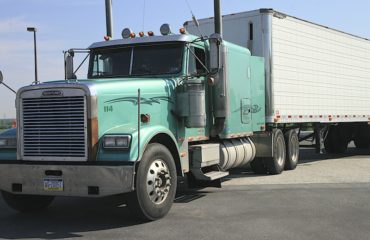- Do you have a teen driver in your family?
- Did you know that of the 4,000 deaths related to commercial vehicles, 26 percent involve young drivers?
- Did you know that motor vehicle crashes in general are the leading cause of teen deaths?
If you have a teen that is driving, this article is for you. I provide five tips on how your teen can be a safer driver around large trucks.
In 2012, in the United States:
- 3,921 people were killed in crashes that involved large trucks.
- 73% of the people killed were occupants in other vehicles.
- Of the 3,921 people killed, approximately 1,000 were young drivers.
Teens and Trucks
Too many drivers of passenger cars, especially young people ages 16 to 24 years old, unnecessarily endanger themselves by failing to recognize that trucks and cars differ significantly in their handling characteristics. To help educate teens about these differences, the Commercial Vehicle Safety Alliance (CVSA) in collaboration with other organizations and support of the Federal Motor Carrier Safety Administration (FMCSA), developed Teens and Trucks.
“Most young drivers never receive training or education on how to drive safely around large trucks and buses; yet sharing the roads with trucks and buses is unavoidable,” said Stephen Keppler, executive director, CVSA. “To help teens understand how to safely drive around large commercial vehicles, they need to be educated on how to do so and that’s the goal of the Teens and Trucks program.”
The program provides a public service announcement, tips for sharing the road, course material for educators, fact sheets and additional material. Distracted driving is also part of the curriculum. It is designed to easily integrate into an existing driver’s education program or be a stand-alone program for teens, parents, teachers, and others.
Global Youth Traffic Safety Month
On May 1st, the National Organizations of Youth Safety (NOYS) brought teens from around the U.S. to Washington DC to learn about traffic safety. It was the national launch of the Global Youth Traffic Safety Month.
While in DC, the youth learned what it means to drive a large rig from a truck driver’s vantage point. They experienced a hands-on demonstration with the opportunity to sit inside a tractor-trailer and see the areas around a truck, known as the “No Zone,” where the truck driver cannot see passenger vehicles, pedestrians or bicyclists. With a police car parked behind the rig and its lights flashing, it quickly became clear why it is called the No Zone. The patrol car was obvious when standing next to the truck, but from inside the cab it was as if it wasn’t there.
Also during this time, the teens spoke with Gary Wilson, a 40-year crash free commercial driver, and law enforcement officers on what it means to be safe around large trucks and buses. The event was an eye-opening experience for many of them.
Five Tips for Safety, Plus a Bonus Tip
In Teens and Trucks, five safety tips are emphasized:
- Don’t Cut Off Large Trucks Or Buses
- Stay Out Of Blind Spots
- Watch Your Following Distance
- Be Aware: Large Trucks And Buses Make Wide Turns
- Move Off The Road
Don’t Cut Off Large Trucks Or Buses. When passing a truck or bus, once it is safe to pass, use your turn signal and let the driver know. Then, when you are in front of the truck, be sure you can see the entire front of the truck in your rearview mirror. That gives you and the truck driver a safe boundary.
Stay Out of Blind Spots. Trucks and buses have large blind spots where they cannot see you or your car. Gary Wilson was very specific to the teens – If you can’t see the driver in the mirrors, then the driver can’t see you.
Watch Your Following Distance. Following too close to a truck is extremely dangerous. The truck driver cannot see you, and you do not have sufficient time to stop if the truck driver has to slow down or stop because of traffic ahead. Maintain a minimum of a 3-second distance between your car and a truck.
Be Aware: Large Trucks And Buses Make Wide Turns. Because of the overall length of a truck, they have longer turning radius. At times, a truck driver has to move into the adjacent lane prior to a turn to give the truck sufficient room to make a turn in the other direction. Always expect these moves and be ready to respond safely.
Move Off The Road. Whenever you are along the side of the road because of mechanical or other problems, get as far over to the side as you can. Give the motoring traffic space to get by and keep yourself safer by staying away from the traffic side.
These five tips for teens—and adults—are to help us be safer around the big-rigs. And here is a bonus tip. Always Buckle Up!
Traffic safety requires that we all take responsibility for road safety and remember that we have to share the road, whether it is as a pedestrian, a bicyclist, a motorcyclist, or as a passenger car or large semi-truck driver. Learning that lesson early will help develop safety skills for a lifetime.
What are you doing to share the road with large trucks? Share below in the comments. To find out more about Teens and Trucks, click here.








